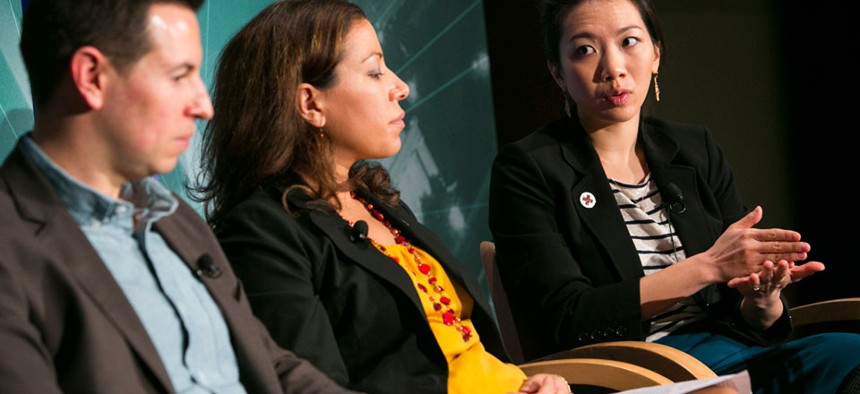Spotting the Trends in Disaster Tweets

From left, Carter Hewgley, Nicole Chapple and Gloria Huang participated in the panel Thursday. Kristoffer Tripplaar
FEMA looks for patterns in social media to improve emergency management.
Disasters are defined by chaos, an orderly system gone awry. But there are patterns in how disasters unfold that emergency managers monitoring social media can use to make smart decisions about what’s real and what doesn’t add up, according to a Federal Emergency Management Agency official.
Phase one of using social media to aid emergency management is about gathering situational awareness from tweets and Facebook posts, broadcasting important safety information to people in the disaster area and correcting misinformation, said Carter Hewgley, director of FEMAStat, a program evaluation arm of the Federal Emergency Management Agency.
The second phase, Hewgley said, is about learning from patterns in how the public uses social media in disasters so you can respond in a smarter way the next time. He was speaking at Nextgov’s government technology conference Nextgov Prime.
“I think the emergency management community defaults to the ‘every disaster is different mentality,’ Hewgley said. “Every disaster is different but there are enormous amounts of similarity. Human beings tend to be very predictable and one of the really powerful things we’ll eventually be able to analyze with social media is the predictive patterns we see people going through, and we’ll be able to move faster because we’ve seen these patterns play out before in events of this type.”
The Red Cross advises volunteers that even if they have “zero information” about a disaster they still know certain things that they can tweet out immediately, such as best practices for taking shelter, said Senior Engagement Specialist Gloria Huang.
The Red Cross also trains employees and volunteers to vet information they gather over social media during a disaster -- for instance, about people who are stranded or trapped under rubble, she said. Those sorts of tweets and posts have helped rescue workers save lives, she said, but often include incorrect information that’s either secondhand or intentionally misleading.
The Red Cross trains people to tweet back at tipsters, asking where their information came from and for more details, she said.






